If you’re here, you already know relevant, quality links are a big part of search engine visibility. You want to build links, but you might be wondering where to start. You may have seen posts about huge, ambitious techniques that rack in tons of links. Those posts can be intimidating.
You don’t have to aim for the sky, right off the bat, though. Instead, you can start from ground zero. You can create a grassroots link building campaign that gets more links, incrementally, instead of either spraying and praying or putting all of your effort into one, huge piece of content.
If you’re a local business, listen up. This post is for you.
And even if you don’t consider yourself a local business, you can still take away bits and pieces of this Ground Zero Technique and use them for your own link building efforts.
If you’re, basically, starting from scratch, you can follow these steps in order. If you’ve already built some solid links at the local level, you can jump in at any of these nine steps and reap the rewards. That’s the beauty of it– you’ll have room to build relevant links, while you test out what works, and you’ll be able to go bigger and bigger as you create a solid linkable asset foundation for your website.
Best of all?
This is easier than most other link building techniques out there. Although other methods can be ultra-effective, building local links is, usually, easier than building industry-related links, especially if you’re just starting.
Personally, I like starting from the ground up.
You’ll also have a much better chance with outreach, as you’ll start at the most basic local level and make new connections as you expand.
Keep in mind; I’m assuming you have at least some amount of time or budget for link building. Unfortunately, you can’t build links without committing either time or money. Usually, it requires both.
But, I’m here to make it as painless as possible for you, so without further ado, let’s begin!

1. On-Site Basics
I know you’re anxious to get started, but you won’t get much value out of building links if you don’t have your on-page SEO in order.
If you already have all the basics covered, feel free to move to the next section.
If not, it’s time to buckle down. When it comes to SEO, you can’t put the cart before the horse. In fact, you have to make sure both the cart and the horse are in good working order. Google will be much kinder to your website if you help them find you. That requires solid SEO fundamentals.
Make sure your Google Business profile is verified and all your information is correct.
You’ll also want to build basic, relevant citations for your site. If you don’t already know, a citation refers to any time your business name, phone number, address, and (sometimes) website appear.
Next, make sure each of your pages has good, basic content. Make sure it’s content humans will understand and, hopefully, even want to read. At the very least, you need a product/service page, a contact page, an about page, a homepage, and a blog. Make sure they’re all functional and make sure they all serve a purpose.
Finally, make sure you add some photos of yourself and your team to your site. This will come in handy when you’re asking for links. People are much more likely to give links, when they can see the real people behind the website, asking for links. Even a simple photo will do, but you need to attach a face to your business if you want to find any success with this Ground Zero Technique.
2. Give Links to Get Links
In my experience, as a link builder and consultant, I’ve met many people who hoard links. They think there are a finite amount of them, and they try to keep all the links to themselves.
Sure, you want more links than your direct competition, but that doesn’t mean you need to be stingy with who you link out to.
You want links, right?

So do most other people, who are trying to market their website. Before you start asking for links, you should offer a hand and give some links. You want to make sure you’re giving out relevant links, though.
Create a Resource Page on your website and curate links to other local businesses you like, helpful resources for your customers, or just people you admire in your industry.
Link to influencers with whom you want to work in the future. Share their content on your social media profiles, as well. Be generous.
When you’re blogging and writing content, always cite your sources. If you get information from another site, be sure to link to it. Link to studies, surveys, and other research. People like facts and numbers, and they like them even more if they come from a credible source.
Just as importantly, people will see you’re willing to link to what you like and to what you find useful and important. You’re a person, who awards links to good content. As we move forward, you’ll want your own good content to get links, as well.
See a common theme here?
Here are four reasons to give out links:
- It builds connections and relationships.
- It makes your site a more valuable resource.
- It incentivizes others to link to you.
- It builds participation, contribution, and community.
Though giving links won’t automatically earn links to your site, it’s a good practice to have in place. You can’t rely on generosity in place of a link building campaign, but you can use that generosity to bolster your link building efforts.
Good deeds don’t go unnoticed. Just make sure you only link to high-quality content. You don’t want to mislead your audience by linking to subpar content.
3. Start in Your Neighborhood
Now that we have covered the basics and a few best practices, it’s time to start building links at the smallest level. You’ll want to lay your foundation with locally relevant sites and you’ll want to start at an easily-approachable, basic level.
Essentially, these are links you might be able to get, just by walking across the street.
Start by finding these sites in your area:
- Homeowners’ associations
- Neighborhood associations
- Condominium complexes
- Apartment complexes
- Hotels
- Bed and breakfasts
- Youth centers
- Shopping centers
- Strip malls
Basically, start with your own neighborhood. Here’s a good example of a homeowners’ association website that has a blog. Since they have a blog, they’re much more likely to link to your site within a post.
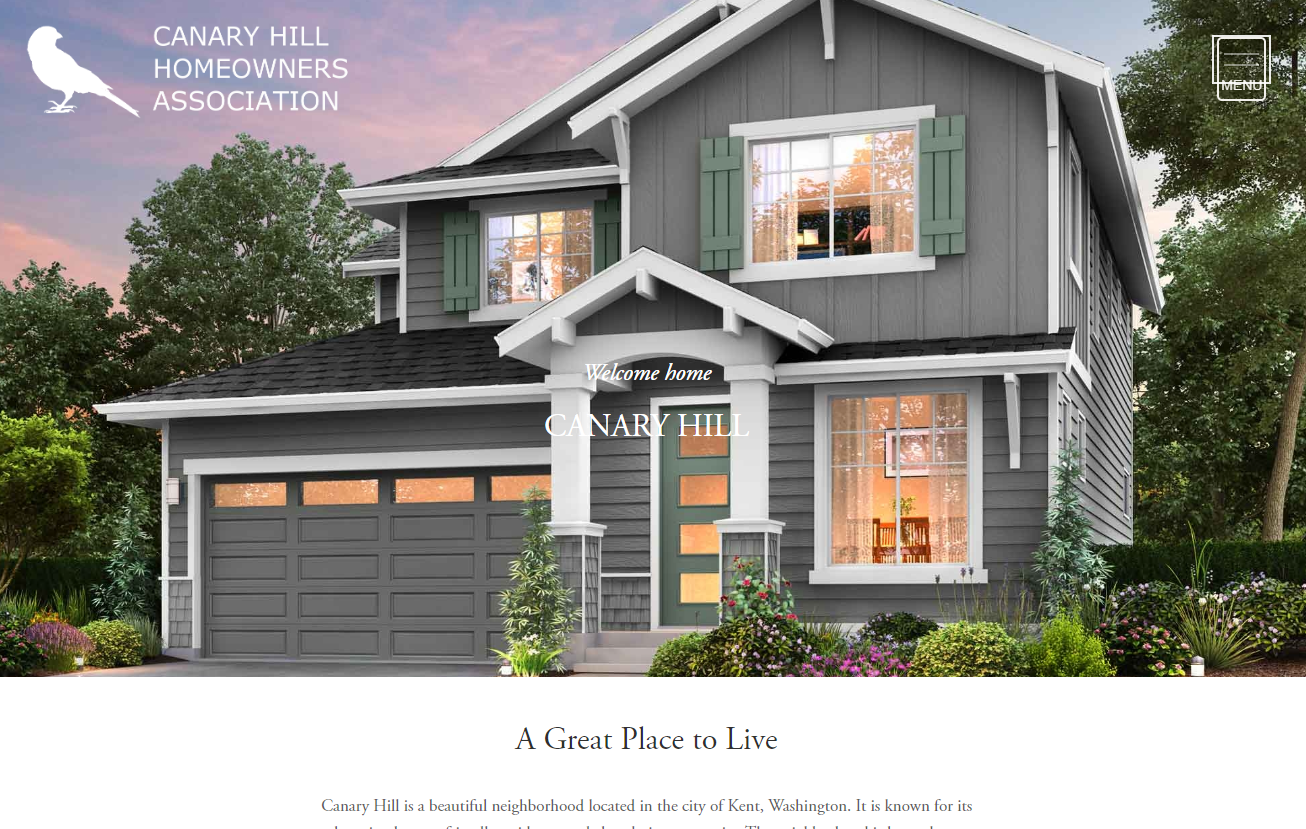
You can approach this a few different ways, but I find, giving something useful to them is the best approach. Offer a discount to the people those associations and housing developments serve. Ask them to post about it on their website, to let their residents/customers know about it.
Oftentimes, you’ll have to catch the person, who actually works on the website– many people, who work for these associations and businesses, won’t know what you’re asking for when you want a link. Find the right person, whether it takes an email, a phone call, or a knock on the door.
If need be, buy their IT person a cup of coffee to set it up for you.
People in your neighborhood will appreciate the discount (or whatever you’re willing to give), and you’ll appreciate the link. It will also give you a chance to build some good, future relationships with other website owners in your most immediate area.
Best of all, you won’t need to build much content for these links.
To add extra value, consider setting up a separate landing page for each association you set up a discount for. This will allow you to address each association and personalize their own unique discount.
Even if you’re not local, you can take advantage of this. If you run an eCommerce store, you can still set up a landing page and offer a “neighborhood discount” to give back to the community. Actually, it’s a great way for non-local businesses to become more active in their home cities.
You can create content, too, of course. Websites, like Patch, allow you to write neighborhood-focused content, and you can link back to your own site, where it’s appropriate.

Just don’t overdo it or be overly self-promotional– you want to add value for the community, at this point.
Even if you only build a few links this way, it will provide the beginnings of a very solid, if humble, link foundation for your website.
Now, it’s time to expand.
4. Expand to City
Once you’ve built some neighborhood links, the pump will be primed for even bigger and better local links. This is when you can start building your first linkable asset which you can use to ask for links from other local businesses, news outlets, universities, and government websites.
If you want to start ranking for city-level terms, your best bet is to build a local guide of some sort, something relevant and useful.
You can create other content, as well, like interviews with local athletes, artists, entrepreneurs, or musicians, but guides, usually, offer the best link bang for your link buck.
The guide doesn’t necessarily have to be relevant to your business’ niche, but you’ll get more mileage if it is.
Start with some research. Google “guide to (your city).” If nothing good pops up, you can make a general guide to attractions, fun, restaurants, and nightlife.
Here’s an example of a pretty cool guide to Brooklyn, NY. The page doesn’t have that many links, but it does rank well, and was either published or updated very recently.
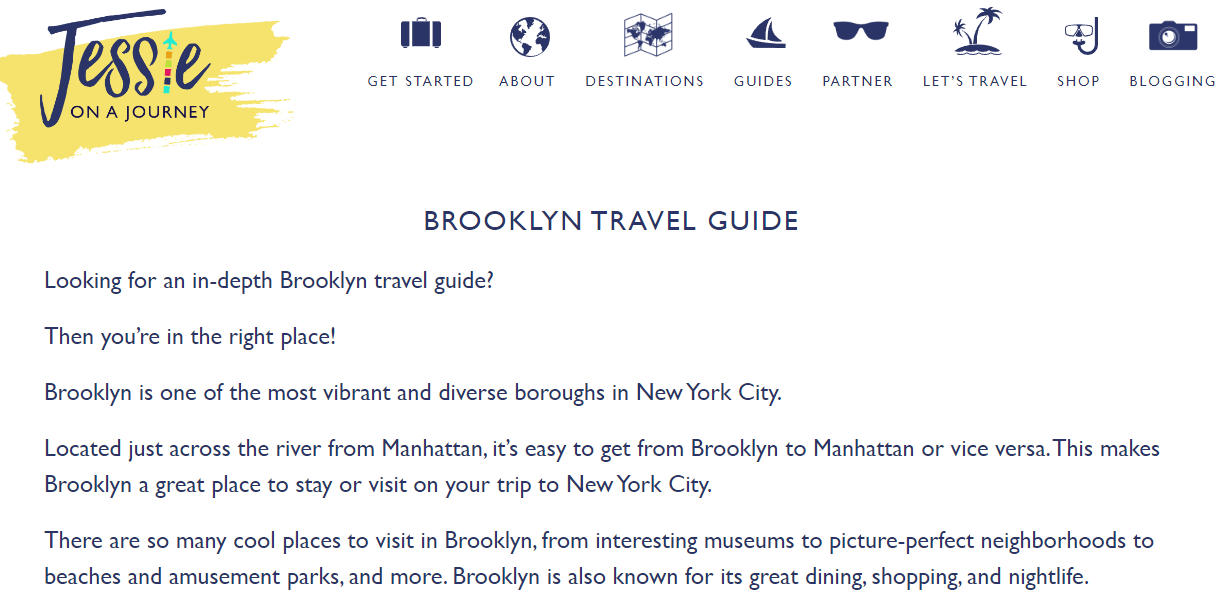
If they built a few links it would likely outrank everything else in the SERPs. Personally, I’d start by finding a local blog like this one or an article related to visiting/moving to Brooklyn like this one. They’re relevant, and seem to have good, built-in audiences.
You could also think bigger, right off the bat.
Which cities do tourists, who visit Brooklyn, come from? You might find bloggers in those areas willing to link. A little research and a phone call with the Chamber of Commerce might be very beneficial.
Sometimes, though, you’ll want to drill down and get more specialized with your guide.
You might try:
- A list of dog-friendly restaurants and bars in your area (people love their pets!)
- A guide to local classes or leagues for adults or kids (photography, softball, aerobics, sewing, software, yoga, etc.)
- List of best local authors and their best work
- List of best holiday lights.
- A list of supposedly haunted houses and buildings, complete with their ghost stories.
- A guide to local swimming pools
- A guide to historical buildings, complete with interviews from local historians
- How to find a great spot to watch a popular parade or fireworks
- A guide to local products you like (you can even write reviews and use those for outreach)
- A guide to adventurous local eating
- Good, cheap parking places for local concerts, sporting events, or any other popular events in your area
When you’re crafting these guides, think of your audience. Even if it’s not relevant to your product or service, it has to be something in which they’ll reasonably be interested.
For example, if you’re focused on health, don’t just list natural food stores or healthy restaurants. Instead, go above and beyond and make a guide to your favorite local, healthy meals. Be specific and link to each restaurant’s menu. Write a mini-review of each meal and explain its health benefits.
Reach out to each and every business you mention in your guide. Those will be the easiest links to get. If your content is unique in your local area, reach out to local news outlets, as well. Local bloggers will also likely be interested.
If you’re not getting a good rate of email response, you can always try visiting those businesses in person or calling them on the phone.
Again, the Ground Zero Technique is all about making connections and providing value, while you’re building a grassroots link foundation. Seize every opportunity you can!
5. Expand to County
After you’ve built your first, big linkable asset, you can go after even bigger fish. You can always repeat step four again, at any time, but you can push ahead and expand, as well.
This section will be a bit shorter, because, honestly, not every county will afford you an opportunity for links.
Many county websites, however, are missing something. It might be because the county is understaffed or maybe they never got around to finishing their website.
Duchesne County in Utah, for example, is a .gov that has a ‘quick links’ sidebar and tons of resource pages built, but they’re almost all blank. Either the pages aren’t there anymore, or they were never built in the first place.
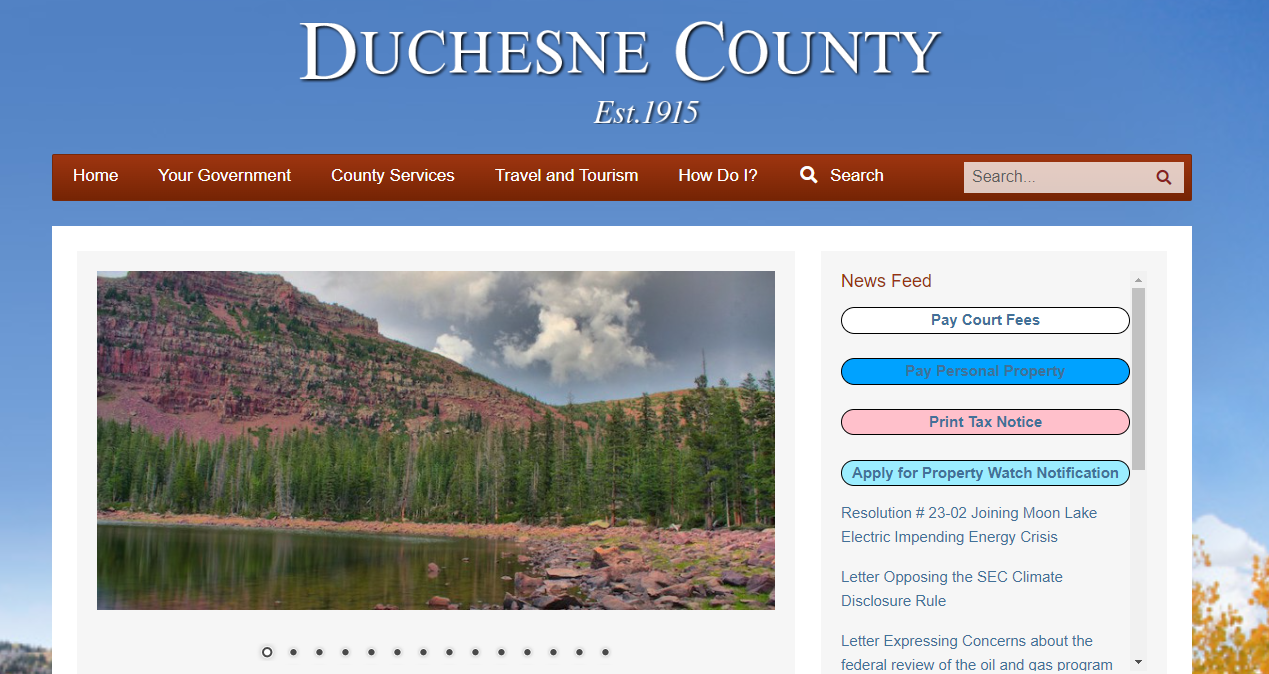
That gives someone in Duchesne an excellent opportunity.
Take a look at your county’s website.
If there’s something missing, find a way to help.
It could be a list of:
- Trails
- Parks
- Sightseeing opportunities
- Locations of historical battles
- Picnic spots
- Restaurants
Get in touch with the county. Offer to build the resource for them and see if you can host it on your own site, and get them to link to it.
If they already have solid resources pages, you can even try to suggest a new resource. As long as it fits and as long as it’s useful to people who live in or are visiting your county, you have a great shot.
I say you have a great shot, because you can use your previous city guide as an example of your work. They can see you’re capable of creating worthwhile resources. That’s the Ground Zero Technique in action!
6. Work with Another Local Entity
Hopefully, now you have at least two big linkable assets under your belt, as well as links to go along with them, so it’s time to harness the power of teamwork.
You’ve already made connections in your area. If you’ve played your cards right, you’ve formed relationships with other local business owners and entrepreneurs. If you can find the right person with whom to work, you can score a big win that helps both your business and theirs.
Find a popular local business that’s not a direct competitor.
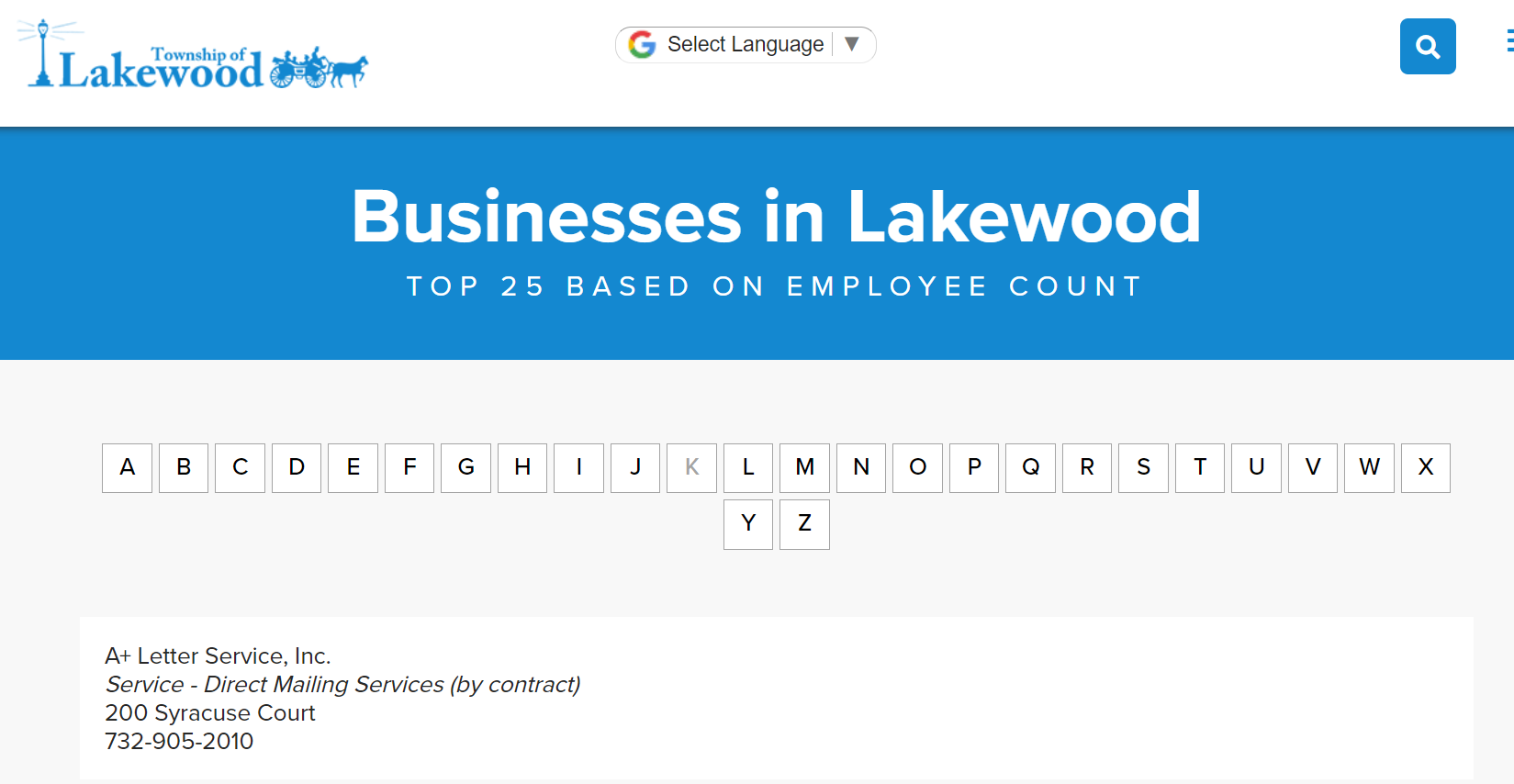
With any luck, you can find someone, who’s also created some good content in the past. It should also be a business in your community that people are excited about.
Basically, you want to team up with them for a big piece of content.
Together you can:
- Do research or a case study
- Run a Google survey that’s relevant to both of you, discuss what the results mean
- Write about the other local business on a Built In-type website that features local businesses and startups. You can just interview the other business to build your content base and foster goodwill, or you can both write about each other– each case will be different
- Interview the business’ founder or a prominent employee with the understanding that they or someone else will link to it– the goal is for you to get a link as the author, and for them to get a link as the interviewee (you can do this the other way around, too, of course)
- Host or sponsor an event with them, and then reach out to local news sources
- Create a how-to video series targeted at your community and audience
As long as you work together on a project, you can share the responsibility and effort, and the sky’s the limit.
The idea is that both of you will be helping to create something valuable for your community. You can each host part of the content, so you can help send traffic to one another’s websites. Or, you can host it all on an outside website, with links to each of your websites.
It doesn’t matter. This is just a chance to get another great piece of content under your belt, make a splash in your community, and make a new ally along the way.
You still have the advantage of being able to knock on doors and make phone calls, and you can use their audience to improve yours, at least, for link building purposes.
Make a list of everyone who is linked to their website, but hasn’t linked to yours. As soon as your joint content is live, you already have a good potential outreach list and a built-in endorsement from a like-minded business.
7. Build a Resource Based on Your Audience’s Interests
Now that you’ve built some effective local links, it’s time to make an industry-wide splash. You don’t have to build the biggest and best piece of content in the world, but it needs to be interesting and valuable for your potential customers.
What do people do with your products or services?
Focus on the hobby, interest, or need you facilitate. Don’t just focus on what people can buy from you; instead, focus on making their lives better.
That can include:
- Providing an in-depth how-to.
- Providing something thought-provoking that makes them think of their want or need in a new way.
- Providing something that garners an emotional reaction (awe is particularly effective).
- Providing something entertaining or funny.
- Providing a good, solid story that makes your audience think of themselves as heroes.
What’s the end goal with your product or service? Is it health? Fun? Adventure? Saving money? Improving quality of life? Focus on that goal.
Now, you’ll need to find a subject. Find a subreddit that is based either on your location or on your industry. Here’s a list.
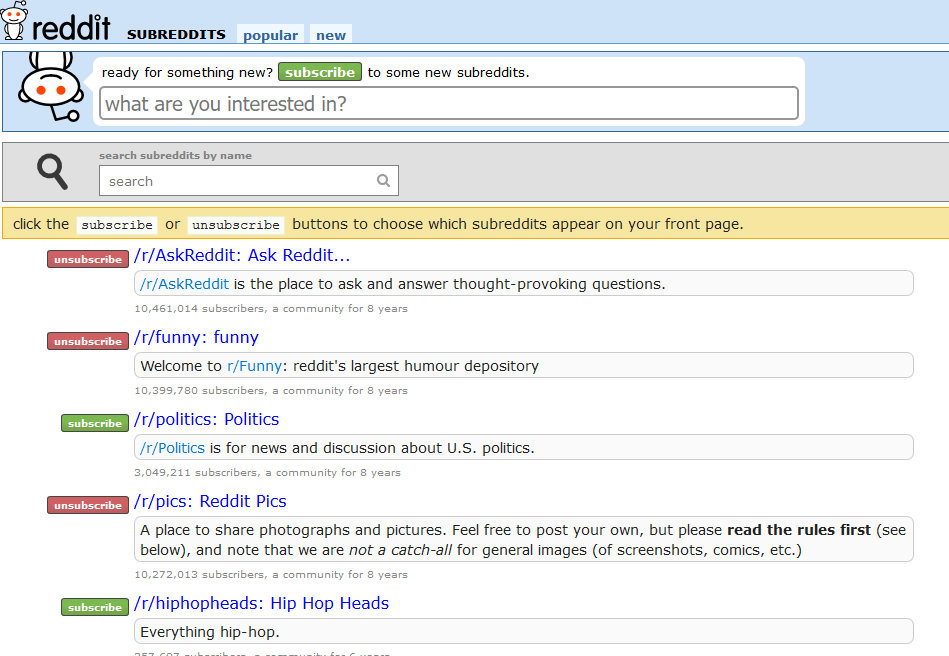
Go into the comments and see which questions people are asking.
Next, go to Amazon. Find books related to your product’s or service’s purpose. Pick a popular book. Scroll down to the reviews section and then select the two or three star reviews.
Why were people dissatisfied with that book? What kind of questions did they have that the book didn’t answer? What did they want to learn? I got this idea from Joanna Wiebe, and you can explore this concept more in-depth at Copyhackers.
Since you have a good idea, based on your audience’s actual interests and questions, Google it. See if someone else has already built that guide in your industry. If they have, either find a new spin or repeat the process. With Reddit and Amazon at your disposal, it shouldn’t take too long.
As you’re writing your content, reach out to other experts. They can be people in whom your audience is interested, or they can just be influencers, whose experience you value. By now, you should have some good contacts and solid relationships.
You can always use all that linkable content you built before as proof you do good work.
Send them a few, short, interview questions and include their answers in your content. You’ll have something even more solid, as outside opinions will only strengthen what you’re putting together.
Solve a problem or satisfy a need or a want with your content. If you sell shoes, focus on hiking, running, or just how to cope with having a bad back. If you run a flower shop, create an ultimate guide to thoughtful gift-giving.
You can still make this content, somewhat, locally focused, of course. The shoe store could build an ultimate guide to hiking trails in their state. The flower shop could build an ultimate guide to romantic spots in the state, as well as how to reach them and where to stay and dine in the area.
Combine your audience’s needs with your own expertise and ask for a little outside help from other experts.
8. Engage Influencers
If you’ve done the Ground Zero technique correctly, you’ve already made some friends on your journey. Now, it’s time to network with the real influencers in your industry and, with both luck and hard work, become one of them.
Basically, at this stage, you’ll be asking influencers for shares and links. By now, you’ve built enough collateral to show you’re a savvy digital marketer. You understand your audience, you know how to build useful content, and you know how to build links.
Before you ask influencers for anything at all, though, you need to do two things.
- Offer help and value before you ask.
- Get to know them and their community.
Find someone you admire in your industry. Before you ask them for anything at all, become engaged with them and their community. Don’t stalk them, by any means, but get to know them. Start by finding them on social media and sharing more of their work.
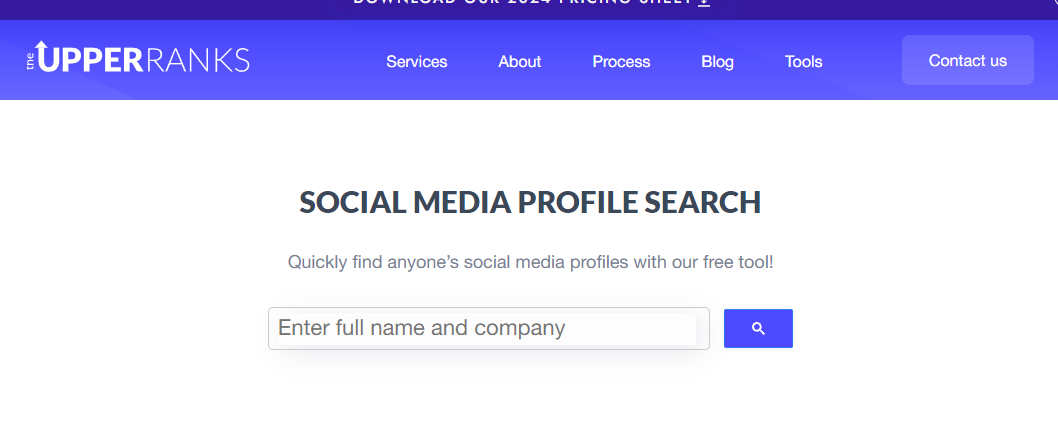
Comment on their blog. Sign up for their newsletter.
If you can use their product or service, by all means, purchase it. Show them you value what they do. Give some support.
Help them if you can. You can include the SEO and link building knowledge you’ve built.
Ask to interview them, so they can promote their business. Ask if they want to collaborate on some content. Don’t just ask for links.
When it’s appropriate, and if you have something their audience will value, ask for a share or a link, but provide value; give more than you take. These relationships will last a long time, and you’ll both benefit from them. It should always be a two-way street, not just a way to manipulate someone into linking to your website.
There’s no real step-by-step guide for this. Just communicate, like a human being, and form real relationships.
You’ll find more opportunities than links, and you’ll be able to pass your own generosity onto others, as well.
9. Ask for Contributions
At this point, you’ll be able to repeat any of the steps in the Ground Zero technique at will. If you find a good idea for content or a good link opportunity, you’ll be able to successfully pursue it.

The side product? You’ve built up a heck of a website. Even if you’ve built around 20 relevant, high-quality links, you’re doing better than many local businesses. You will compete.
You have some great content, some recognition, and some links, so now, you should ask for contributions. Ask the influencers with whom you’ve worked in the past to write for you or, at the very least, to contribute their opinion to bulk up your content. You’ll now get traffic and links from their audience.
As you take on high-quality contributors, your site will become a destination for expert insights– on both a local level and an industry level.
At this point, you can use a tool, like BuzzSumo, to find out who’s linked to your contributors before and target them for outreach. If they liked and admired your contributor’s wisdom in the past, they’ll probably link to them again. This time, though, the links will go to your website.
Conclusion
By nature, link building is always hard work. If you have a real strategy and attainable goals, however, you won’t be overwhelmed or intimidated.
Work from the ground up, execute a grassroots campaign, and take it one step at a time. There’s no need to put all your eggs in one basket. The Ground Zero Technique allows you to learn as you go, make a few mistakes, and keep moving forward and upward.
Instead of trying to create the biggest, best piece of content your industry has ever seen, you can walk before you run. You can build momentum (and links!) by reaching out to realistic link targets every step of the way.
As you go, you’ll build credibility, build collateral, and form relationships with local entities and industry thought leaders.
You don’t have to reach for the sky, right away. Instead, start from the ground and work your way up.
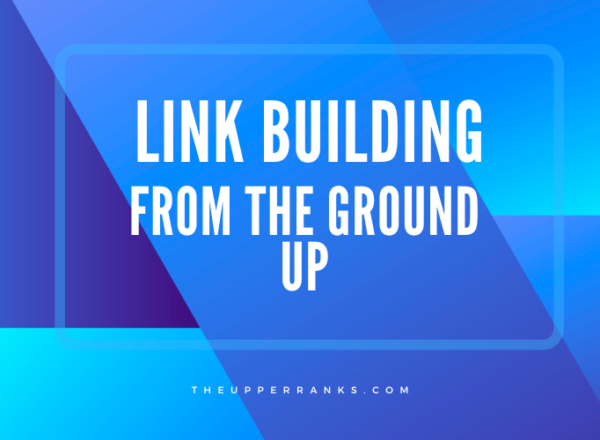
Comments
David,
I love this post and can see lots of scope with this concept that you have shared. I will definitely give it a try.
Thanks again.
Good luck, Steven!
Sounds like a plan, Steve! Let me know how it works for you.
This is a really awesome post and exactly what I was looking for! Loving your blog!
Thank you, Sam and I appreciate you taking the time comment!
Great and informative article right here!
Thank you, Gary!
All 9 steps you provided for Solid Link Foundation are very informative. Thank you for sharing! Very nice, Enjoyed every bit of your blog.
Thanks so much 🙂
Thanks for sharing your nice link building strategy from easier to harder in 9 steps. I enjoyed much.
Thank you for sharing this helpful content regarding Backilnks
Nice advice. You have given a detailed plan for building a backlink profile from scratch for local businesses. The post has spurred a few ideas in my mind on how I may go about doing some stuff for my clients. Thanks for the highly valuable gem. I am going to share this article on my FB page.
This is an amazing post where you have detailing the intricacies of link building that anyone can work on and apply.